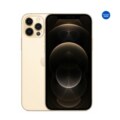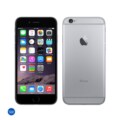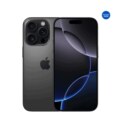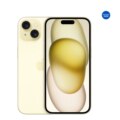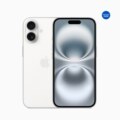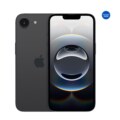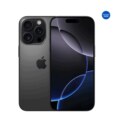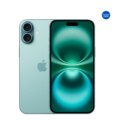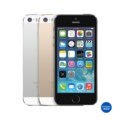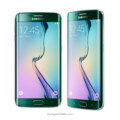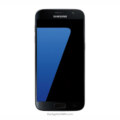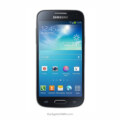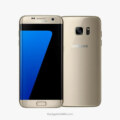Apple iPhone 17 Pro
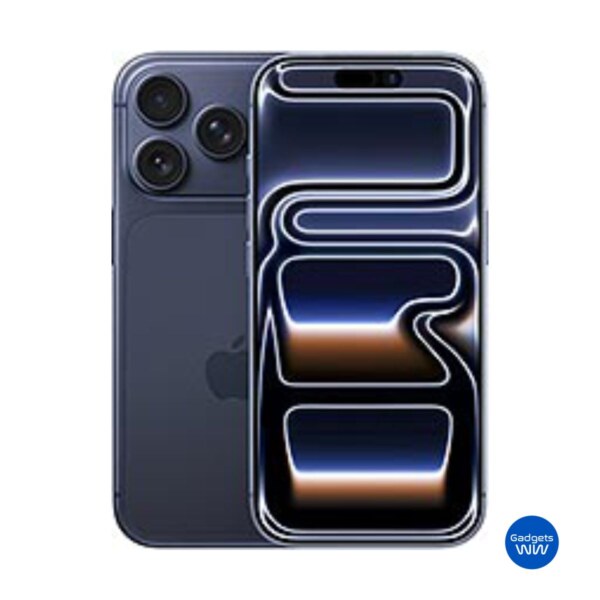

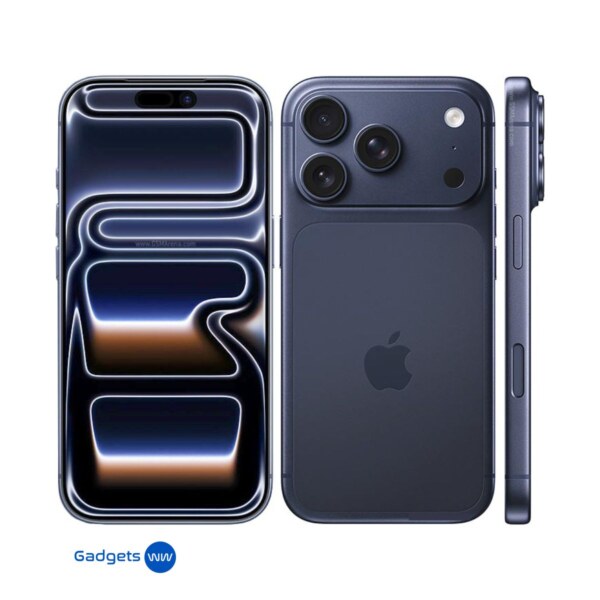
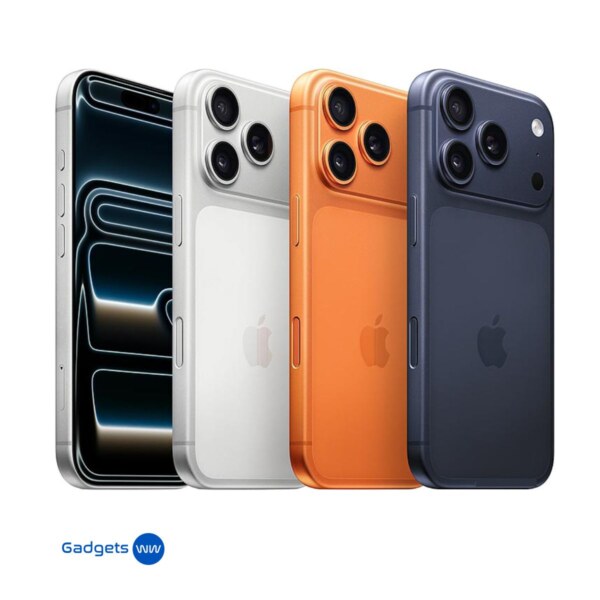
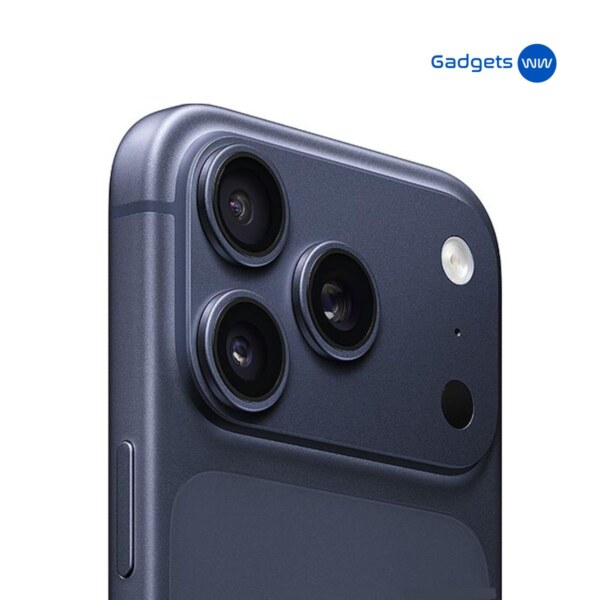
-
Display: 6.3" (1206x2622 pixels)
-
Processor: Apple A19 Pro
-
Rear Camera: 48MP
-
RAM: 12GB
-
Storage: 256GB / 512GB / 1TB / no card slot
-
OS: iOS 26
-
Battery: 3998mAh
The iPhone 17 Pro: A New Chapter for Apple’s Flagship
Every few years, Apple manages to surprise us, not just with incremental updates, but with features or design shifts that feel like a fresh chapter. The iPhone 17 Pro is one of those inflection points. It doesn’t just refine what came before; in many ways, it rethinks the assumptions behind a “Pro” iPhone. For longtime Apple watchers, it’s an exciting, and dangerous, device to review, because expectations are sky-high. But let me walk you through where I think Apple hit the mark (and where they didn’t quite land) in this new flagship.
A Look & Feel Refresh: Subtle but Meaningful
When you first hold the iPhone 17 Pro, you sense that Apple has revisited some design fundamentals. Gone is the titanium frame that defined recent Pro models; instead, this generation leans back onto aluminum (or part aluminum/part glass) in its chassis. The idea seems to be a balance: preserve structural strength while improving thermal performance and perhaps reducing costs.
One of the most talked-about changes is the new camera “plateau”, a raised rectangular block on the back that houses the triple-lens system. That plateau gives internal space to rearrange components and manage heat, but it also means the phone won’t lie flat on surfaces without teetering or risking scratches. (More on that later.)
Apple has also introduced a vapor chamber inside the chassis, moving liquid through sealed channels to pull heat away from core components. It’s a technique more commonly seen in gaming laptops or high-end PCs, and its inclusion here signals Apple is taking sustained performance seriously.
Colors? The iPhone 17 Pro is available in deep blue, cosmic orange, and a refined silver. Those choices reflect a bit more personality this round.
All in all, the new aesthetic is more than just surface deep. Apple has clearly reengineered key structural elements, not dramatic at first glance, but meaningful under the skin.
Under the Hood: Power, Cooling & Efficiency
This is where the iPhone 17 Pro begins to show its teeth. At its core is the A19 Pro chip, built (rumored) on Apple’s next-generation 3nm process. We expect gains in both efficiency and performance, but, crucially, more headroom for demanding tasks.
Memory gets a boost too: leaks suggest 12 GB of RAM, which would be a jump from prior “Pro” models that capped out lower. This extra memory can help with multitasking, larger project files, and keeping apps alive in the background.
But chips and memory are just the beginning. Apple has invested in thermal management. The vapor chamber helps distribute heat, preventing the device from throttling too aggressively when under sustained load (e.g. gaming, video editing). Combined with the aluminum body acting as a heat sink, the system is designed to maintain performance during extended use.
On the wireless front, all iPhone 17 models (including Pro) are slated to use a custom Wi-Fi 7 chip developed by Apple, replacing Broadcom in past generations. This could help with bandwidth, latency, and responsiveness, especially in congested environments. The Pro models are also expected to retain Qualcomm’s 5G modem (supporting mmWave) while the base models might use Apple’s own C1 modem.
The Camera System: More Than Megapixels
If you’re a photography or content creation enthusiast, this is where the 17 Pro makes compelling arguments. One of the standout changes is that all three rear cameras (Wide, Ultra Wide, and Telephoto) are rumored to be 48 MP Fusion sensors. That’s a big leap, especially for the Telephoto lens, which had lagged behind in resolution in prior models.
This change means more flexibility in cropping, better detail in challenging lighting, and improved computational processing. Apple has incorporated “fusion” techniques in cameras before (blending multiple exposures and sensor data), and packing high resolution in all lenses opens up creative possibilities.
There’s talk of variable aperture on the wide lens, meaning the lens can adjust the aperture to control light or depth-of-field more flexibly. If implemented well, that could be a major differentiator.
Also rumored: dual video recording, enabling simultaneous capture from the front and rear cameras. For creators making reaction videos or vlogs, that’s potentially huge.
Video-wise, 8K capture makes its way into the conversation. That said, raw 8K footage is demanding in storage and heat, so how Apple balances it with practical usability will matter.
A subtle but important upgrade: the front-facing camera is expected to jump to 24 MP from the prior 12 MP. That’s a welcome boost for selfies, video calls, and portrait shots using the front lens.
All of this adds up to a camera system that isn’t just about more megapixels, but about flexibility, compositional control, and pushing creative boundaries.
Battery, Charging & Longevity
Apple doesn’t often brag about raw battery capacity, but leaks suggest the iPhone 17 Pro Max will push the size envelope to house a heftier battery. The Pro model may get a modest boost too. Combined with the efficiency gains in the A19 Pro and better thermal design, real-world endurance could be notably improved.
One welcome move: Apple is reportedly continuing its adoption of removable adhesive for battery modules. This makes battery replacement safer (less risk of damage) and more repair-friendly.
Wireless charging is expected to move to 25 W for compatible Qi 2.2 chargers (versus the prior 15 W cap), making wireless topping-up more practical. However, it’s not yet clear whether reverse wireless charging (powering AirPods or Apple Watch via the phone) is retained. Some rumor sources say it was tested but its inclusion in final hardware is uncertain.
In terms of longevity, thermal control is not just about performance now, it’s about preserving internal components (battery, circuits) over time. If Apple nails it, the 17 Pro could age more gracefully under heavy use.
Trade-offs & Critiques: What I’m Watching Closely
No product is perfect, and the 17 Pro is no exception. Here’s where I’m most skeptical, and what I’d want to test thoroughly.
Scratches, Edge Damage & Durability
A controversy has already surfaced: some users and teardown experts point out that the anodized aluminum around the camera bump (especially at the edges) is vulnerable to “spalling”, small chips or flakes of material, as the edge geometry is sharp. iFixit’s teardown shows this region is especially stressed under wear. Apple’s response is that many store-floor units get “scuffs” from MagSafe stands or handling, not genuine material failure, but that doesn’t entirely allay concerns.
Given the raised plateau design, the camera bump is more exposed when you place the phone on flat surfaces, increasing the risk of micro-scratches unless you use a case or lens protector. Some have already dubbed a “scratchgate” over this issue.
In short: the 17 Pro pushes performance and camera tech, but it may trade off some hardness in the edges. A rugged case may not just be an accessory, it may become essential.
Thickness & Ergonomics
To fit the vapor chamber, larger battery, and extra structural layout, the device doesn’t feel as wafer-thin as some prior models. That bulk can affect hand comfort over prolonged use, especially for users with smaller hands. Some leaks even suggest the Pro Max version will be the “thickest iPhone yet” to accommodate battery gains.
While this may be acceptable to power users, there will always be trade-offs between performance and sleekness. I’d want to see how it feels over a full day’s use.
Heat Under Load
The vapor chamber and aluminum heat spreader are clever, but nothing is magic. Pushing 8K video, sustained gaming, or prolonged computational tasks (e.g. AI processing) will generate heat, and if Apple is overly ambitious, we might still see throttling or heat-induced performance dips. The real test: a 30‑ or 60‑minute continuous stress test.
Cost & Value
Rumors peg the starting price for the iPhone 17 Pro at $1,099, which is $100 more than prior Pro editions. With base storage rising (likely 256 GB instead of 128 GB), some may argue you’re getting more for the price, but the question remains: is the upgrade “worth it” for most users?
If you only shoot casual photos, use light apps, and don’t stress the phone, many features may be overkill. The “Pro” label demands that the premium is justified. The durability concerns and bulk may eat into perceived value.
Why It Matters, and Who It’s For
So, with all its strengths and trade-offs, who gets the real benefit of the iPhone 17 Pro?
- Creators & Content Producers: The enhanced camera system, 48 MP lenses, 24 MP front cam, 8K video potential, and dual-camera recording make this a tool, not just a device.
- Power Users & Multitaskers: 12 GB RAM, aggressive thermal management, and improved wireless connectivity let you push harder than before.
- Early Adopters & Tech Enthusiasts: The shift back to aluminum, the vapor chamber cooling, and Apple’s internal Wi-Fi 7 chip show architectural bets. For those who love dissecting tech, the 17 Pro is a goldmine.
- But maybe not ideal for someone who prizes slimness above performance, or a user who mostly uses social media, light apps, and doesn’t push the camera or video features. That kind of user might find more value in the non‑Pro 17 models, or even last-generation hardware now discounted.
Final Thoughts & What to Watch in Reviews
The iPhone 17 Pro is not a safe “incremental bump.” It’s a device that tries to reshape what the “Pro” tier means: a platform for creators, high performance, and longer-term viability rather than just speed bumps.
But ambition is dangerous. If Apple underestimates things like edge durability or heat under stress, some of the glory can fade in real use.
When full reviews hit, here’s what I’ll pay close attention to:
- Durability over months — scratches, edge chipping, wear and tear
- Thermal stability — how it holds up under prolonged video or gaming
- Battery longevity in day-to-day use (not just on paper)
- Camera system in real-world lighting — especially telephoto and ultra-wide
- Usability in hand — does it feel too bulky or just right?
Specs
LAUNCH
| Announced | 2025, September 09 |
| Availability | Available. Released 2025, September 19 |
NETWORK
| 2G Bands | GSM 850 / 900 / 1800 / 1900 CDMA 800 / 1900 |
| 3G Bands | HSDPA 850 / 900 / 1700(AWS) / 1900 / 2100 CDMA2000 1xEV-DO |
| 4G Bands | 1, 2, 3, 4, 5, 7, 8, 12, 13, 17, 18, 19, 20, 25, 26, 28, 30, 32, 34, 38, 39, 40, 41, 42, 48, 53, 66 - A3523 1, 2, 3, 4, 5, 7, 8, 12, 13, 14, 17, 18, 19, 20, 25, 26, 28, 29, 30, 32, 34, 38, 39, 40, 41, 42, 48, 53, 66, 71 - A3256 1, 2, 3, 4, 5, 7, 8, 11, 12, 13, 14, 17, 18, 19, 20, 21, 25, 26, 28, 29, 30, 32, 34, 38, 39, 40, 41, 42, 48, 53, 66, 71 - A3522 1, 2, 3, 4, 5, 7, 8, 12, 13, 17, 18, 19, 20, 25, 26, 28, 30, 32, 34, 38, 39, 40, 41, 42, 48, 66 - A3524 |
| 5G Bands | 1, 2, 3, 5, 7, 8, 12, 20, 25, 26, 28, 30, 38, 40, 41, 48, 53, 66, 70, 75, 77, 78, 79 SA/NSA/Sub6 - A3523 1, 2, 3, 5, 7, 8, 12, 14, 20, 25, 26, 28, 29, 30, 38, 40, 41, 48, 53, 66, 70, 71, 75, 77, 78, 79, 258, 260, 261 SA/NSA/Sub6/mmWave - A3256 1, 2, 3, 5, 7, 8, 12, 14, 20, 25, 26, 28, 29, 30, 38, 40, 41, 48, 53, 66, 70, 71, 75, 77, 78, 79 SA/NSA/Sub6 - A3522 1, 2, 3, 5, 7, 8, 12, 20, 25, 26, 28, 30, 38, 40, 41, 48, 66, 70, 75, 77, 78, 79 SA/NSA/Sub6 - A3524 |
| Speed | HSPA, LTE, 5G, EV-DO Rev.A 3.1 Mbps |
| Technology | GSM / CDMA / HSPA / EVDO / LTE / 5G |
DESIGN
| Measurements | 150 x 71.9 x 8.8 mm (5.91 x 2.83 x 0.35 in) |
| Weight | 206 g (7.27 oz) |
| Build | Glass front (Ceramic Shield 2), aluminum alloy frame, aluminum alloy back/ glass back (Ceramic Shield) |
| SIM | Nano-SIM + eSIM + eSIM (max 2 at a time; International) eSIM + eSIM (8 or more, max 2 at a time; USA) Nano-SIM + Nano-SIM (China) IP68 dust tight and water resistant (immersible up to 6m for 30 min) Apple Pay (Visa, MasterCard, AMEX certified) |
DISPLAY
| Type | LTPO Super Retina XDR OLED, 120Hz, HDR10, Dolby Vision, 1000 nits (typ), 1600 nits (HBM), 3000 nits (peak) |
| Size | 6.3 inches, 96.4 cm2 (~89.4% screen-to-body ratio) |
| Resolution | 1206 x 2622 pixels, 19.5:9 ratio (~460 ppi density) |
| Protection | Ceramic Shield 2, Mohs level 5 Anti-reflective coating |
PLATFORM
| OS | iOS 26 |
| Chipset | Apple A19 Pro (3 nm) |
| CPU | Hexa-core (2x4.26 GHz + 4xX.X GHz) |
| GPU | Apple GPU (6-core graphics) |
MEMORY
| Card Slot | No |
| Internal | 256GB 12GB RAM, 512GB 12GB RAM, 1TB 12GB RAM NVMe |
REAR CAMERA
| Triple | 48 MP, f/1.8, 24mm (wide), 1/1.28", 1.22µm, dual pixel PDAF, sensor-shift OIS 48 MP, f/2.8, 100mm (periscope telephoto), 1/2.55", 0.7µm, PDAF, 3D sensor‑shift OIS, 4x optical zoom 48 MP, f/2.2, 13mm, 120˚ (ultrawide), 1/2.55", 0.7µm, PDAF TOF 3D LiDAR scanner (depth) |
| Features | Dual-LED dual-tone flash, HDR (photo/panorama) |
| Video | 4K@24/25/30/60/100/120fps, 1080p@25/30/60/120/240fps, 10-bit HDR, Dolby Vision HDR (up to 120fps), ProRes, ProRes RAW (up to 120fps), Apple Log 2, 3D (spatial) video/audio, stereo |
SELFIE CAMERA
| Single | 18 MP multi-aspect, f/1.9, 20mm (ultrawide), PDAF, OIS SL 3D, (depth/biometrics sensor) |
| Features | 4K@24/25/30/60fps, 1080p@25/30/60/120fps, gyro-EIS |
| Video | HDR, Dolby Vision HDR, 3D (spatial) audio, stereo sound rec., ProRes RAW, Apple Log 2 |
SOUND
| Loudspeaker | Yes, with stereo speakers |
| 3.5mm Jack | No |
COMMUNICATION
| WLAN | Wi-Fi 802.11 a/b/g/n/ac/6e/7, tri-band, hotspot |
| Bluetooth | 6.0, A2DP, LE |
| Positioning | GPS (L1+L5), GLONASS, GALILEO, BDS, QZSS, NavIC |
| NFC | Yes |
| Radio | No |
| USB | USB Type-C 3.2 Gen 2, DisplayPort |
FEATURES
| Sensors | Face ID, accelerometer, gyro, proximity, compass, barometer Ultra Wideband (UWB) support (gen2 chip) Emergency SOS, Messages and Find My via satellite |
BATTERY
| Kind | Li-Ion 3988 mAh - Nano SIM model Li-Ion 4252 mAh - eSIM only model |
| Charging | Wired, PD3.2, AVS, 50% in 20 min 25W wireless MagSafe/Qi2, 50% in 30 min (15W - China) 4.5W reverse wired |
OTHERS
| Colors | Silver, Cosmic Orange, Deep Blue |
| Models | Silver, Cosmic Orange, Deep Blue |
| SAR | 1.19 W/kg for head exposure, 1.19 W/kg for body exposure |
| SAR EU | 1.49 W/kg for the head, trunk, and limbs |
PRICE
| Nigeria | ₦2,193,623.03 |
| UK | £ 1,099.00 |
| USA | $1472.17 |
| India | ₹130,605.28 |
EU LABEL
| Energy | Class A |
| Battery | 47:00h endurance, 1000 cycles |
| Free fall | Class B (180 falls) |
| Repairability | Class C |
Reviews
Disclaimer Note
The reviews, opinions, and information shared on this blog are based on personal experiences, research, and available product details at the time of writing. While we strive to provide accurate and up-to-date information, we cannot guarantee that all specifications, prices, or features remain current.

